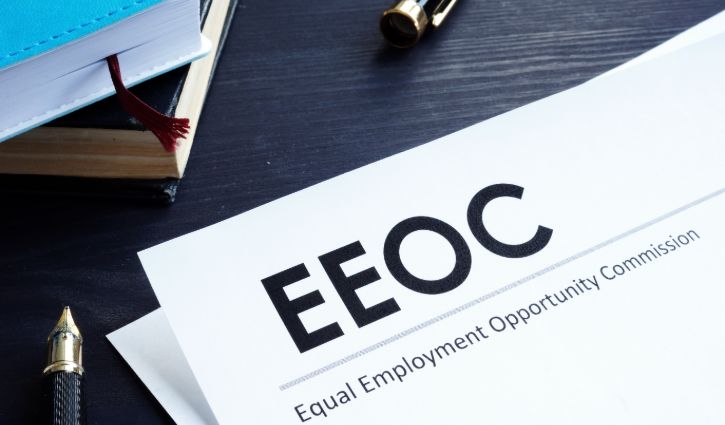According to the Equal Employment Opportunity Commission (EEOC), harassment is a form of employment discrimination that violates Title VII of the Civil Rights Act of 1964, the Age Discrimination in Employment Act and the Americans with Disabilities Act. Harassment is unwelcome conduct that is based on race, color, religion, sex (including pregnancy), national origin, age (40 or older), disability or genetic information.
Harassment is at the center of many workplace discrimination claims today. In Fiscal Year (FY) 2020, the EEOC secured a record amount of recovery of more than $535 million for victims of discrimination in the workplace, resolving more than 70,804 workplace discrimination charges. Notably, the EEOC recovered around $84.4 million for 902 victims of harassment through its litigation program from these charges.
According to the agency, prevention is the best tool to eliminate harassment in the workplace. This article provides EEOC findings on workplace harassment and prevention recommendations for employers to review.
EEOC Harassment Findings
In 2015, the EEOC created the Commission’s Select Task Force on the Study of Harassment in the Workplace, known as the “Select Task Force,” which was established to gain insights from a range of experts on preventing harassment. The Select Task Force then published key findings and recommendations from the study, which are summarized below.
Workplace Harassment Remains a Persistent Problem
Today, a substantial portion of workplace discrimination claims include an allegation of workplace harassment. These include, among other claims, charges of unlawful harassment on the basis of sex (including sexual orientation, gender identity and pregnancy), race, disability, age, ethnicity or national origin, color and religion. While there is robust data and academic literature on sex-based harassment, more research is needed regarding harassment on other protected bases.
Workplace Harassment Often Goes Unreported
Common workplace-based responses by those who experience sex-based harassment are to avoid the harasser; deny or downplay the gravity of the situation; or attempt to ignore, forget or endure the behavior. The least common response to harassment is to take some formal action—either to report the harassment internally or file a formal legal complaint. Roughly 3 out of 4 individuals who experience harassment never talk to a supervisor, manager or union representative about the harassing conduct.
Many employees who experience harassment fail to report the harassing behavior or file a complaint because they fear disbelief in their claim, inaction on their claim, blame, or social or professional retaliation.
[display_mode mode=”non-member-only”]Members login to access full article[/display_mode]
[display_mode mode=”member-only”]There Is a Compelling Business Case for Stopping and Preventing Harassment
When employers consider the costs of workplace harassment, they often focus on legal costs—and with good reason. While the EEOC secures substantial amounts of recoveries each year for workers alleging harassment—these direct costs are just the tip of the iceberg. Workplace harassment first and foremost comes at a steep cost to those who suffer it, as they experience mental, physical and economic harm. Beyond that, workplace harassment affects all workers, and its actual cost includes decreased productivity, increased turnover and reputational harm. All of this is a drag on performance—and the bottom line.
It Starts at the Top—Leadership and Accountability Are Critical
Workplace culture has a significant impact on allowing harassment to flourish, or conversely, in preventing harassment. The importance of leadership cannot be overstated—effective harassment prevention initiatives and efforts to establish a workplace culture in which harassment is not tolerated should start with and involve the highest level of management of an organization. But a commitment from the top to a diverse, inclusive and respectful workplace is not enough. Rather, at all levels and across all positions, an organization should have systems in place that hold employees accountable for this expectation. Accountability systems should ensure that those who engage in harassment are held responsible in a meaningful, appropriate and proportional manner. Those whose job it is to prevent or respond to harassment should be rewarded for doing that job well (or penalized for failing to do so). Finally, leadership means ensuring that anti-harassment efforts are given the necessary time and resources to be effective.
Training Must Change
Much of the training done over the last 30 years has not worked as a prevention tool—and has focused on avoiding legal liability. Effective training can reduce workplace harassment, while ineffective training can be unhelpful or even counterproductive. However, even effective training cannot occur in a vacuum—it must be part of a holistic culture of non-harassment that starts at the top. Similarly, one size does not fit all. Training is most effective when tailored to the specific workforce and workplace, and different cohorts of employees. Finally, when trained correctly, middle managers and first-line supervisors in particular can be an employer’s most valuable resource in preventing and stopping harassment.
New and Different Approaches to Training Should Be Explored
The are several models of training that may show promise for harassment training. “Bystander intervention training,” which is increasingly used to combat sexual violence on school campuses, empowers co-workers and gives them the tools to intervene when they witness harassing behavior, and may show promise for harassment prevention. Workplace “civility training” does not specifically focus on eliminating unwelcome or offensive behavior based on characteristics protected under employment nondiscrimination laws, but rather on promoting respect and civility in the workplace generally.
It’s On Us
Harassment in the workplace will not stop on its own—it’s on organizations to be part of the fight to stop workplace harassment. Leaders cannot expect workplace cultures to change themselves if employees are complacent bystanders. For this reason, the EEOC suggests exploring the launch of internal campaigns in the workplace. Doing so could transform the problem of workplace harassment from being about targets, harassers and legal compliance, into one in which co-workers, supervisors, clients and customers all have roles to play in stopping such harassment.
EEOC Recommendations for Employers
From the EEOC’s Select Task Force’s report, the following is an overview of employer recommendations.
Recommendations Regarding Workplace Leadership and Accountability
Leadership can play a key role in establishing expectations and creating a work environment designed to prevent harassment. Employers should:
- Foster an organizational culture in which harassment is not tolerated and in which respect and civility are promoted. Employers should communicate and model a consistent commitment to that goal.
- Assess their workplaces for the risk factors associated with harassment and explore ideas for minimizing those risks.
- Conduct climate surveys to assess the extent to which harassment is a problem in their organization.
- Hold mid-level managers and front-line supervisors accountable for preventing and responding to workplace harassment, including through the use of metrics and performance reviews.
Recommendations Regarding Harassment Prevention Policies and Procedures
Policies and procedures are instrumental when implementing measures to prevent harassment. Employers should:
• Adopt and maintain a comprehensive antiharassment policy (which prohibits harassment based on any protected characteristic and includes social media considerations) and should establish procedures consistent with the principles discussed in the EEOC’s report.
• Ensure that the anti-harassment policy, in particular, provides details about how to complain of harassment and report observed harassment, and is communicated frequently to employees in various forms and methods.
• Be alert for any possibility of retaliation against an employee who reports harassment and take steps to ensure that such retaliation does not occur.
• Ensure that, where harassment is found to have occurred, discipline is prompt and proportionate to the behavior(s) at issue and the severity of the infraction. Employers should ensure that discipline is consistent and does not give (or create the appearance of) undue favor to any particular employee.
Recommendations Regarding Anti-harassment Compliance Training
Lastly, effective anti-harassment compliance training can help prevent and mitigate harassment. When designing and planning training, employers should:
- Offer compliance training to all employees that includes the content and follows the structural principles described in the EEOC’s report, and do so on a regular basis and in a universal manner.
- Dedicate sufficient resources to train middle management and first-line supervisors on how to respond effectively to harassment that they observe, that is reported to them or of which they have knowledge or information—even before such harassment reaches a legally actionable level.
- Consider including workplace civility training and bystander intervention training as part of a holistic harassment prevention program.
Summary
Harassment remains a persistent issue in the workplace. Employers can review this report from the EEOC for more information about harassment.
For legal advice, employers should seek local legal counsel. For additional workplace resources, contact TechServe Alliance today.
Download PDF [/display_mode]












